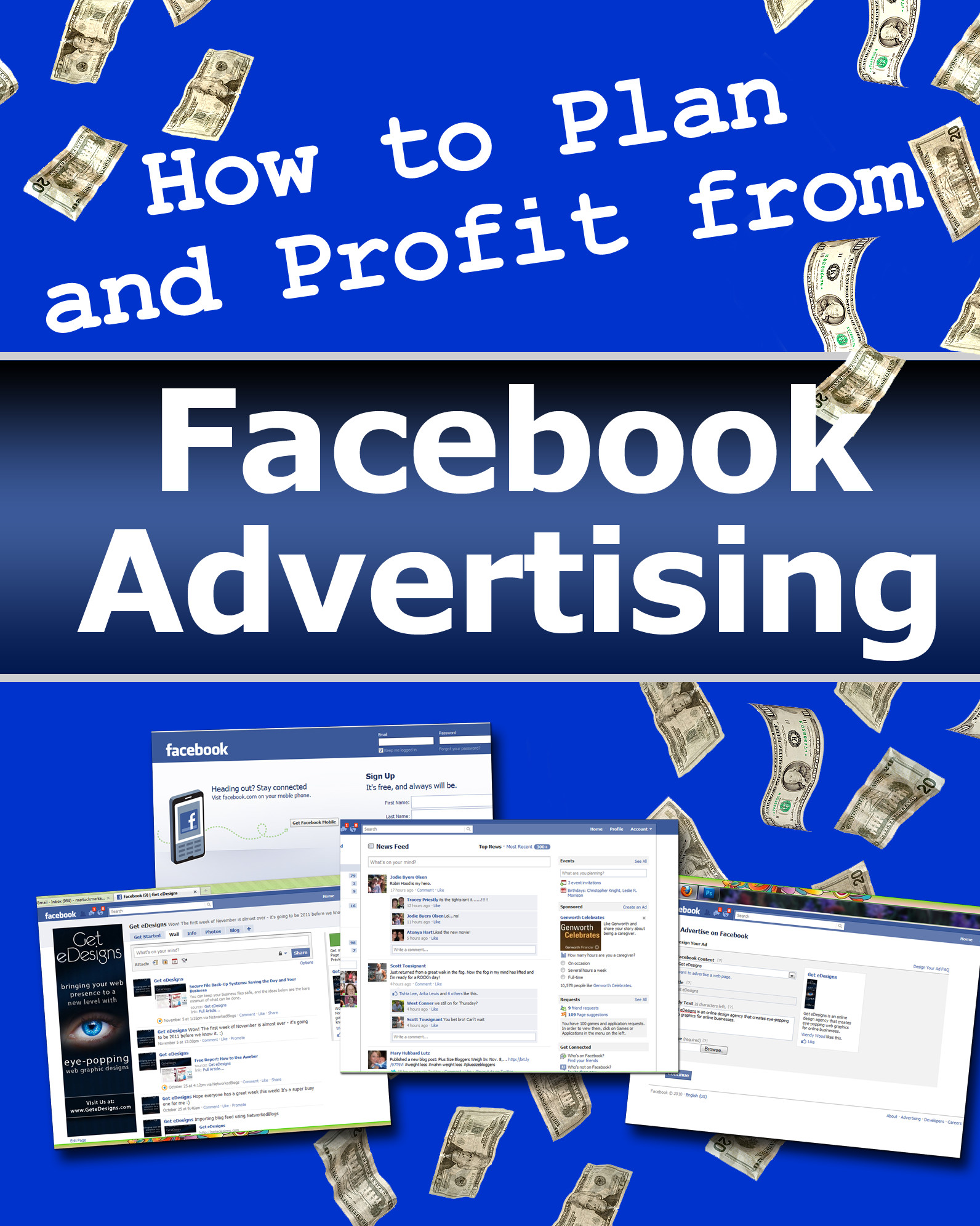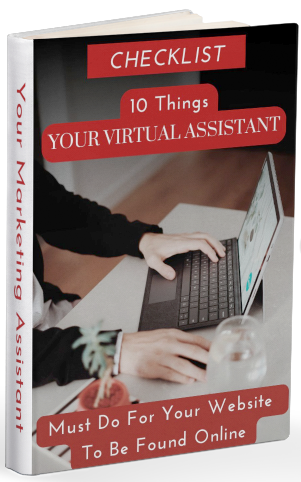The Lowdown on Facebook Advertising
Facebook is in millions of homes around the world. In fact, it has more than 500 million active users. (An active user is someone who has been on the site in the past 30 days.) That’s why we are covering Facebook advertising.
On November 6, 2006, Facebook launched their advertising program. “For the last hundred years media has been pushed out to people, but now marketers are going to be a part of the conversation. And they’re going to do this by using the social graph in the same way our users do,” Zuckerberg announced.
While Facebook ads work much the same as other PPC or Pay Per Click ads do, there are a few significant differences.
Facebook advertising allows you to narrow your ads to be seen by more specific demographic (i.e. Age, Sex, Location and often interest).
- On Facebook, targeting with keywords is optional
- Facebook ads are delivered direct to your target audience right on their profile pages
- Compared to Google ads, on Facebook there are fewer advertisers which means less competition for your niche. This is also relevant because it can cost you much less per click – a better return on your investment.
- Additionally, people can “Like” your advertisements, which can produce a snowball effect. If you’re seeking to drive traffic to your website, Facebook Fan Page, Profile Page event, group or application, Facebook Advertising may be your ideal solution.
What This Blog Post Is Designed to Accomplish
This report operates under the assumption that you already have a Facebook Account. If you do not, you’ll need to register – it’s free.
This report walks you through the five steps required to plan and profit from Facebook Advertising. The steps include:
Step #1 What Are Your Goals?
Step #2 Who is Your Audience?
Step #3 Design Your Advertisement
Step #4 Establish Your Budget and Pricing
Step #5 Track the Data!
We’ll wrap it up with a quick list of tips to maximize your Facebook Advertising success!
So let’s get started!
Step #1 – What Are Your Goals with Facebook Advertising?
The first step to a successful Facebook Advertising campaign is to sit down and think about what you want to accomplish. What are your goals?
Do you want to:
- Drive traffic to your website?
- Drive traffic to your Facebook profile or Fan Page?
- Acquire leads?
- Increase sales for a specific product or service?
Generate awareness and increase exposure?
You may want to achieve all of these goals. However it’s important to be specific. This will help you create the most effective ad possible. It’ll also help you make the right decisions when establishing your budget and choosing your audience specifications. In short, you’ll get a higher return on investment.
Step #2 – Who is Your Audience?
One of the wonderful things about Facebook advertising is that you can be ultra specific. Facebook users provide Facebook, and their friends, with an abundance of information about themselves. We’re talking about their favorite books, interests, religion, political views, favorite quotes and so on. All of this information is gold to a potential advertiser.
When setting up your advertisement campaign you’ll be able to choose whom you want to see your advertisement by targeting specific demographic information. You can target by location, keywords, likes and interests, language, education, workplace, birth date, age, connections, friends, and relationship status.
So, for example, if you wanted to target all of the single women aged 25-35 in Texas, it’s an easy task.
It’s important to be specific about your audience when creating a Facebook Advertisement. It helps you produce specific copy for a highly targeted audience.
For example, you could create an ad for single women, one for married women and one for divorced women. This specificity helps you boost click throughs and maximize your budget.
With more than 500 million active users ranging from pre-teens to senior citizens, your audience is likely present on Facebook. Before you begin creating your advertisement, decide specifically whom you’re going to advertise to.
You can always create more than one ad, so if you have a large audience, brainstorm how you can use the Facebook demographic options to narrow your focus.
Step #3 – Design Your Advertisement
There are essentially four components to every Facebook Advertisement. They include:
URL – Your website address or where you want to drive traffic to. If you’re sending traffic to a promotion or sales page, then that page will be your URL. If you’re boosting traffic or awareness for your Facebook Fan Page then you’ll use that URL. You can also generate awareness for a Facebook Group, Game, Application or Event.
Ad Title/Headline – The purpose of your Facebook headline is to grab the attention of your target audience. In step two we mentioned that you can and should create a specific ad for each targeted audience.
We used the example of single women, married women and divorced women. Each headline will be written to that specific audience, so your headline for single women will appeal to them specifically. Your headline for married women will be different as will your headline for divorced women.
Like Google Advertisements, on Facebook your headline is limited to a number of characters. You have 25 characters, including spaces, to capture your audience’s attention.
Ad Body Copy – Your body copy is where you make your promise and/or highlight the benefits of your product or service and include a call to action. You have 135 characters to accomplish this goal.
Advertisements that use simple and active language generally receive the best results. .
An Image/Graphic – Facebook advertising requires you to use an image or graphic for your advertisement. You’ll notice, if you’re an active Facebook user, that some people use strange or shocking images that grab attention but are unrelated to their advertisements.
Facebook recommends using an image that relates to your business and/or advertisement. The maximum image size is 110 pixels wide by 80 pixels tall.
Step #4 – Budget and Pricing
Before you start spending money on Facebook, it’s important to know how much you’re willing to spend and how much your advertising/marketing budget will allow.
When in doubt, start small! Create a highly targeted ad and monitor it for results. When you’ve fine-tuned it for maximum results, then you can add another advertisement to your campaign or increase your budget.
Once you’ve created your advertisement and chosen your target audience demographics you’ll be asked to set your budget and pricing. Here are the decisions you’ll be asked to make:
Pricing Type
There are two different pricing types on Facebook. They include:
Cost Per Click (CPC) – A type of campaign pricing where you pay each time someone clicks on your ad. This is the best type of campaign to use when you want to drive specific action on your website or Facebook Page.
Cost Per Thousand Impressions (CPM) – A type of campaign pricing where you pay based on the number of people who view your ad. This is the best type of campaign pricing to use if you want to raise general awareness within a targeted audience.
Daily Budget
Your daily budget is the maximum amount of money you’re willing to spend on an individual campaign each day. If this is your first advertisement you may want to set a low daily budget so you can monitor results. Once you know your ad is optimized you can increase your daily budget.
Above all else, make sure you’re comfortable with your budget. If you only have $50 a week to spend then your daily budget will be $50/7 days or $7.14 per day. Facebook promises you’ll never pay more than your daily budget and they stop showing your ad once you’ve reached your budget limit.
Maximum Bid
Facebook advertisements work on an auction based system. This means that the market sets the price for a click depending on demand for your keywords.
You’re going to be asked to set a maximum bid. This is the amount of money you’re willing to pay per click on your ad or per thousand views of your ad, depending on whether you have a CPC or CPM campaign.
Your maximum bid competes against other advertisers’ bids to determine which ad gets displayed to the target audience and how much you ultimately pay for a click. This becomes important if you are in a highly competitive industry where you’ll be competing for ad space with a number of other businesses.
Remember you can adjust your budget at anytime. It’s important to monitor your campaign for the first few days to analyze results and modify your campaign to fit your goals and budget.
Step #5 – Track the Data with Facebook Advertising!
Facebook provides analytics and data so you can test and track just about everything. Split testing is highly recommended. When you split test you can analyze:
- Which graphic works best
- Which headline works best
- Which call to action motivates the most click throughs
- You can even test your audience specifications
All of this information will help you create the most profitable advertisement possible. You may find that the 30-40 demographic isn’t converting at all but your 40-50 demographic is very responsive. Then you’ll have a decision to make. Eliminate the 30-40 demographic and focus on the 40-50 or rework your ad to the 30-40 demographic to get better results.
Due to the vast number of options Facebook advertising provides, you can generate tremendous results. The key is to have a specific goal and then to create an ad designed to achieve that goal. If your ad campaign is too broad in scope then it’s going to be difficult to get your money’s worth.
Okay, you now know the five basic steps necessary to achieve success with Facebook advertising. Let’s take a look at the top five tips for maximizing your Facebook advertising campaigns.

Top Five Tips For Maximizing Your Facebook Advertising Campaigns.
1 – Choose your images wisely.
Each element of your advertisement is important and that includes your graphic or image. Make sure the image is relevant to your business and your advertisement. Consider choosing images that help strengthen your brand.
Above all else, test and track your images to see which ones perform best. Many marketers find that their click through rates will plateau and a change in their graphic will help renew interest and boost CTR.
2 – Use your data.
Facebook advertising provides an abundance of information to help you achieve the best results possible.
You have access to:
- Standard metrics like Impressions (the number of times your ad is shown) and Clicks (the number of times your ad is clicked)
- Demographic metrics about the people who are clicking on your ad like age, gender and location
- Profile metrics about the people who are clicking on your ad like interests, favorite movies and books
Conversion metrics
3 – Read the guidelines first
When you create an advertisement on Facebook it isn’t immediately approved. Facebook needs to review it to make sure it fits their guidelines. You can find and review the Facebook ad guidelines here.
You can also find a list of common mistakes, as they relate to the published guidelines, here. Common mistakes include publishing your ad in ALL CAPS.
4 – Use keywords in your ad copy.
What keywords are you targeting? Make sure you use them in your copy, too. Keywords attract the attention of your target audience. They motivate click throughs and ensure your prospect has positive connection to your ad.
5 – Keep your ad fresh
Don’t be afraid to change it up. Test various headlines, calls to action and images. Keeping your ads fresh and up to date will help you continue to receive the benefits and achieve your advertising goals.
Conclusion
Facebook advertising offers an abundance of opportunities to build your business. The trick to maximizing your success and your investment is to clearly establish your goals. What do you want your Facebook ad to accomplish? Once you’ve clearly outlined your goals, each subsequent step in the ad creation process should support your goals.
Finally, make sure to test and track your success. Each aspect of your ad can be tested and tracked. The more you optimize your ad for results the easier it will be to achieve your goals.
Planning Sheet for Using Facebook Advertising in Your Online Business
Your Facebook advertising campaign will run smoothly if you plan in advance. This planning worksheet outlines the five steps you want to take before you create your first ad. You can then use this sheet to track your ad’s success. It’s great for split testing and marketing to several keywords/target markets at once.
What Are Your Goals? What do you want your ad to achieve? For example, if you’re launching a new information product you may want to boost traffic to your sales page.
Who is Your Audience? Facebook makes it possible for you to target both keywords and specific audience demographics. Each ad will be created with a unique audience and keywords in mind. Before you create your first ad document who you’re targeting with the ad. What keywords are you using?
Create Your Advertisement. In addition to a graphic or image, your ad has 25 characters, including spaces, to capture your audience’s attention – your headline. You also have 135 characters to state your promise or offer and your call to action. You can use the space below to jot down your rough copy.
How Much Do You Want to Spend? Create your daily/weekly budget for your ad. Then once you’re in Facebook and choosing your budget you’ll be able to decide if CPM or CPC is best for you. You’ll also be able to bid on your keywords and stay within your budget.
State your daily/weekly budget here.
How Will You Track the Data? How will you know when you’ve achieved your goals? Split testing can help you identify the most successful ads. However, you may need to use other measures to track other goals.
For example, if you’re driving traffic to a sales page how will you track the visits that came from yore Facebook ad? Simply analytics often provides a solution. A tool like Google analytics is free to install on your web pages. Document how you’re going to test and track your Facebook ad.
| Ad Launch Date | Ad Goal | Target Audience Demo-graphics | Keywords | Budget | Ad Copy | Results (Based on Goals) |








Leave a Reply